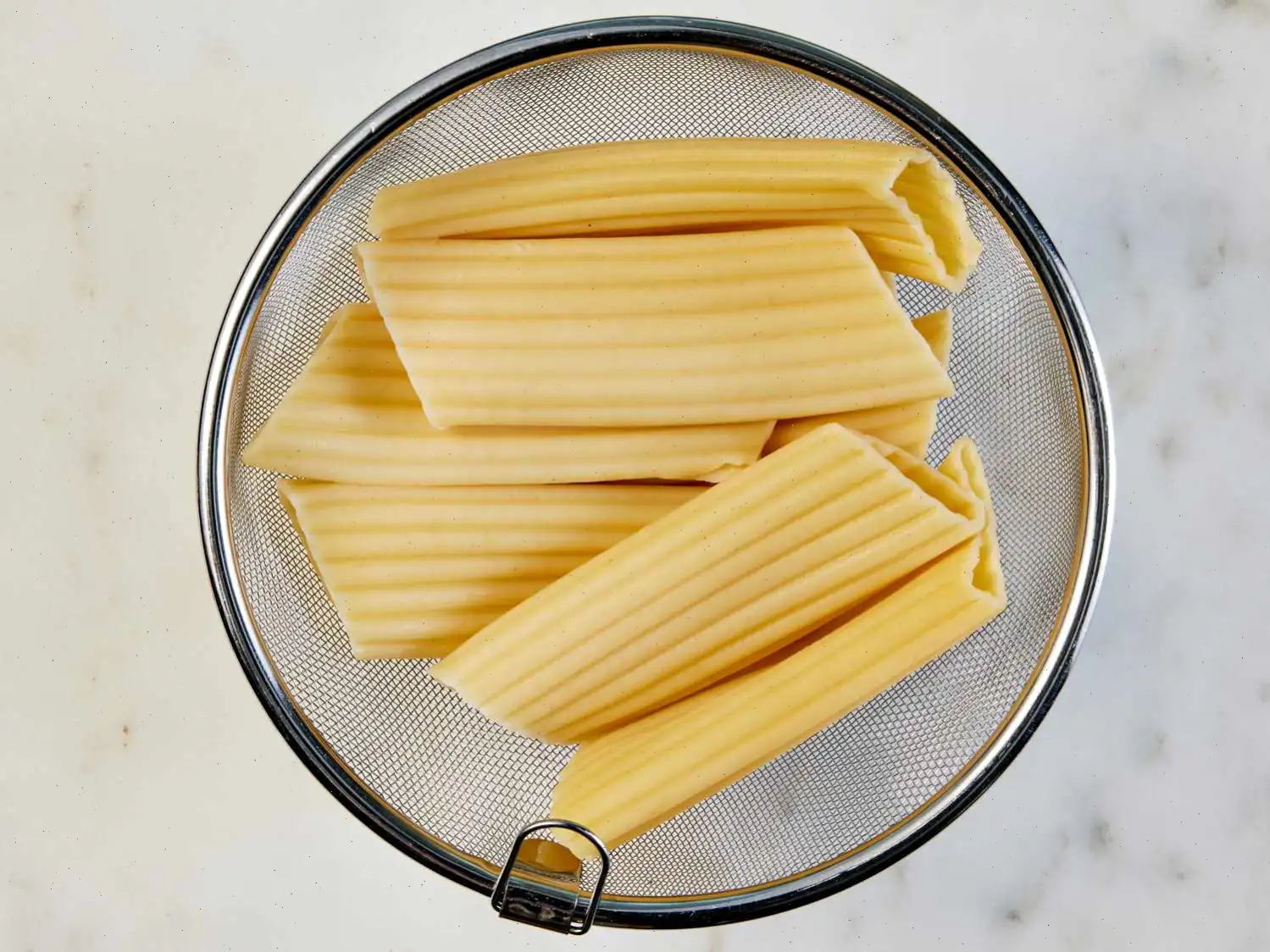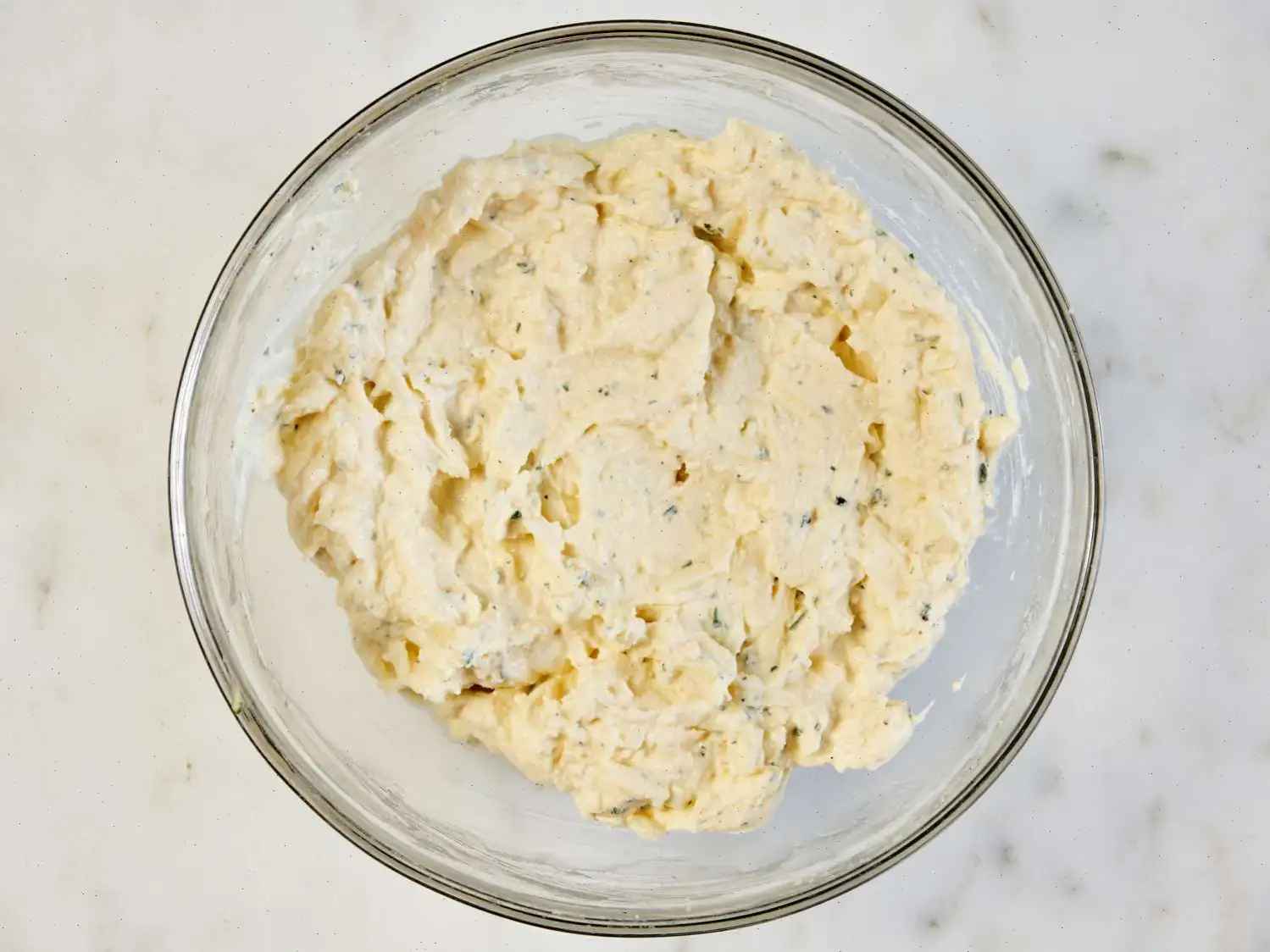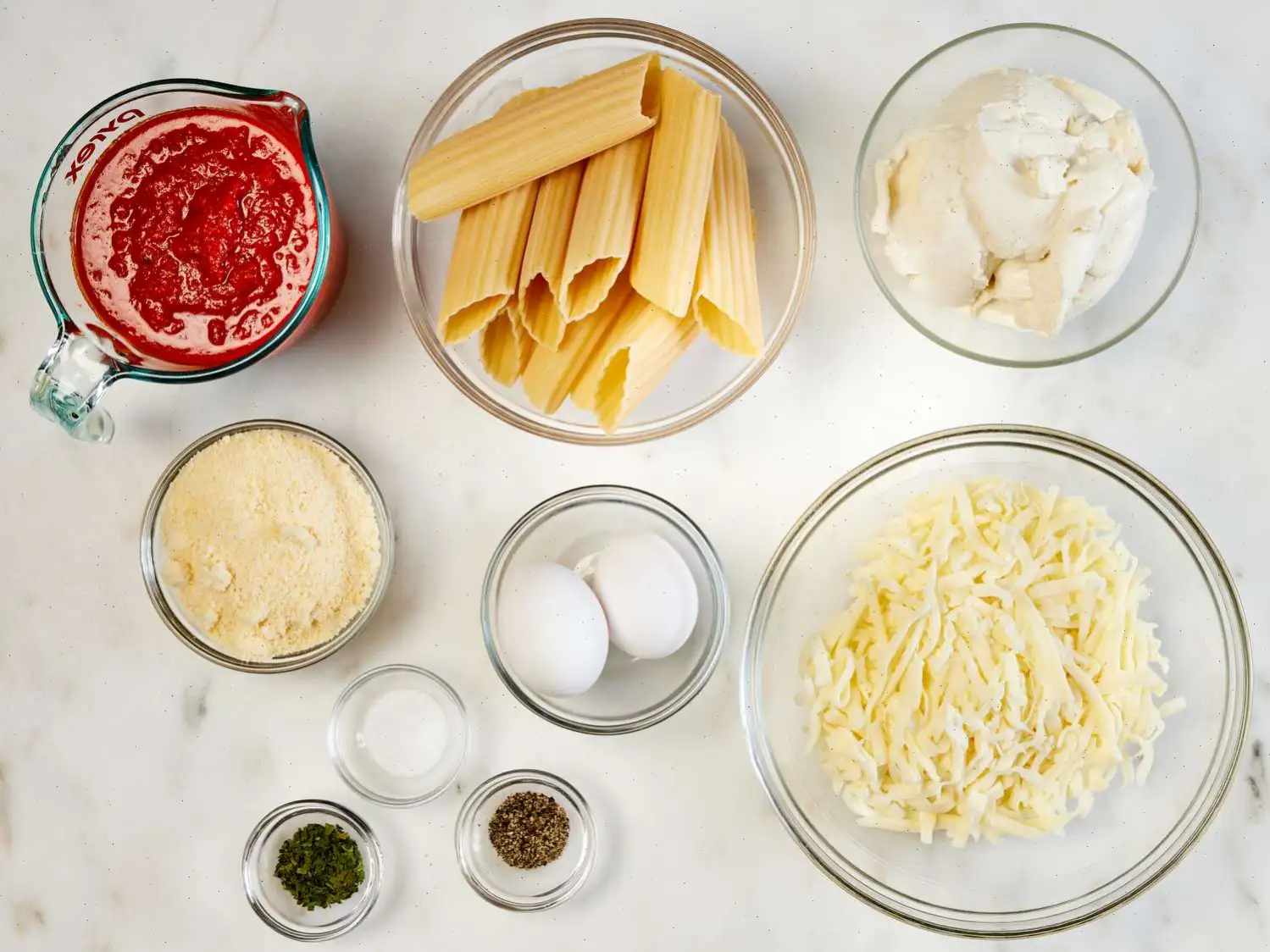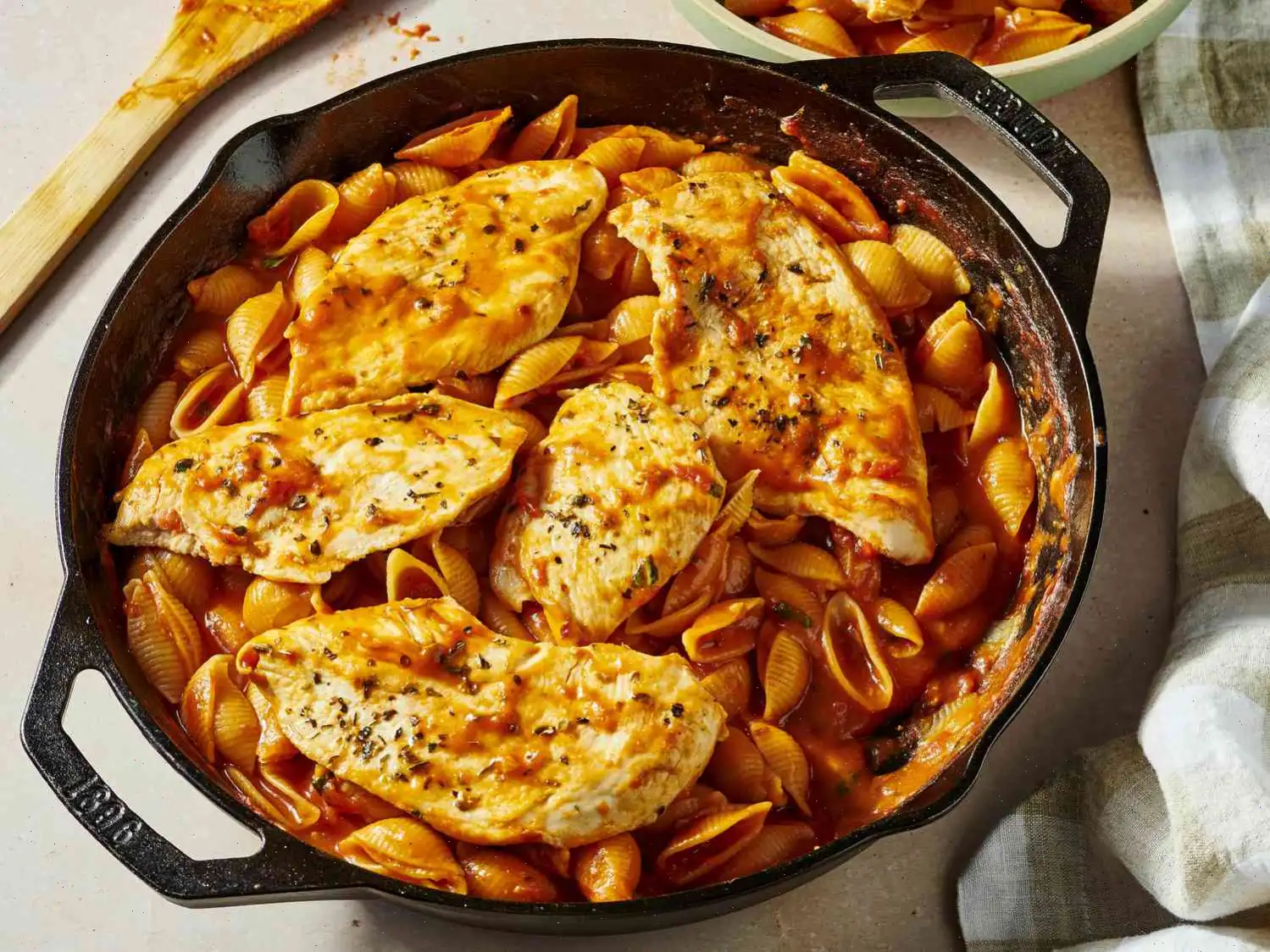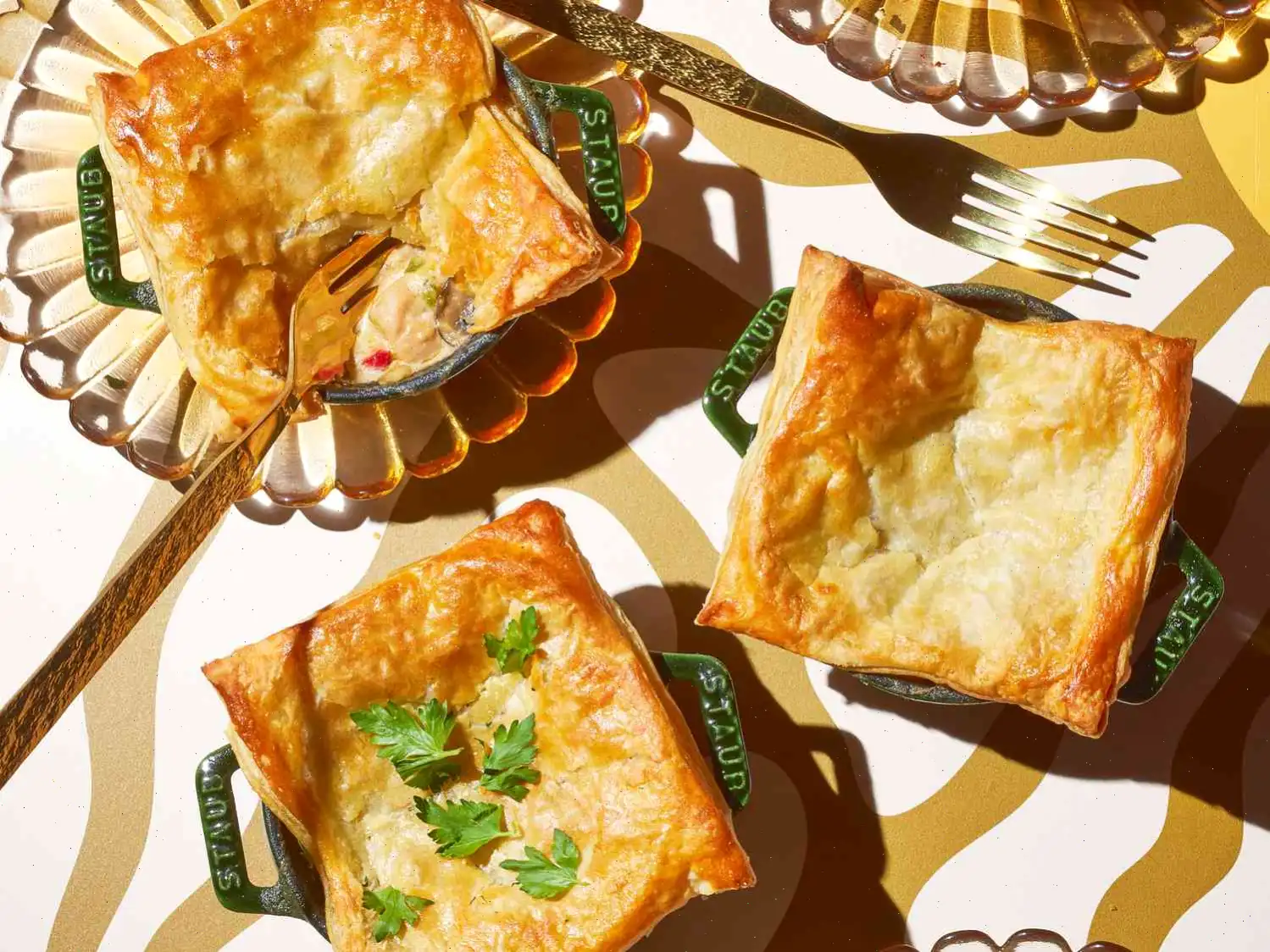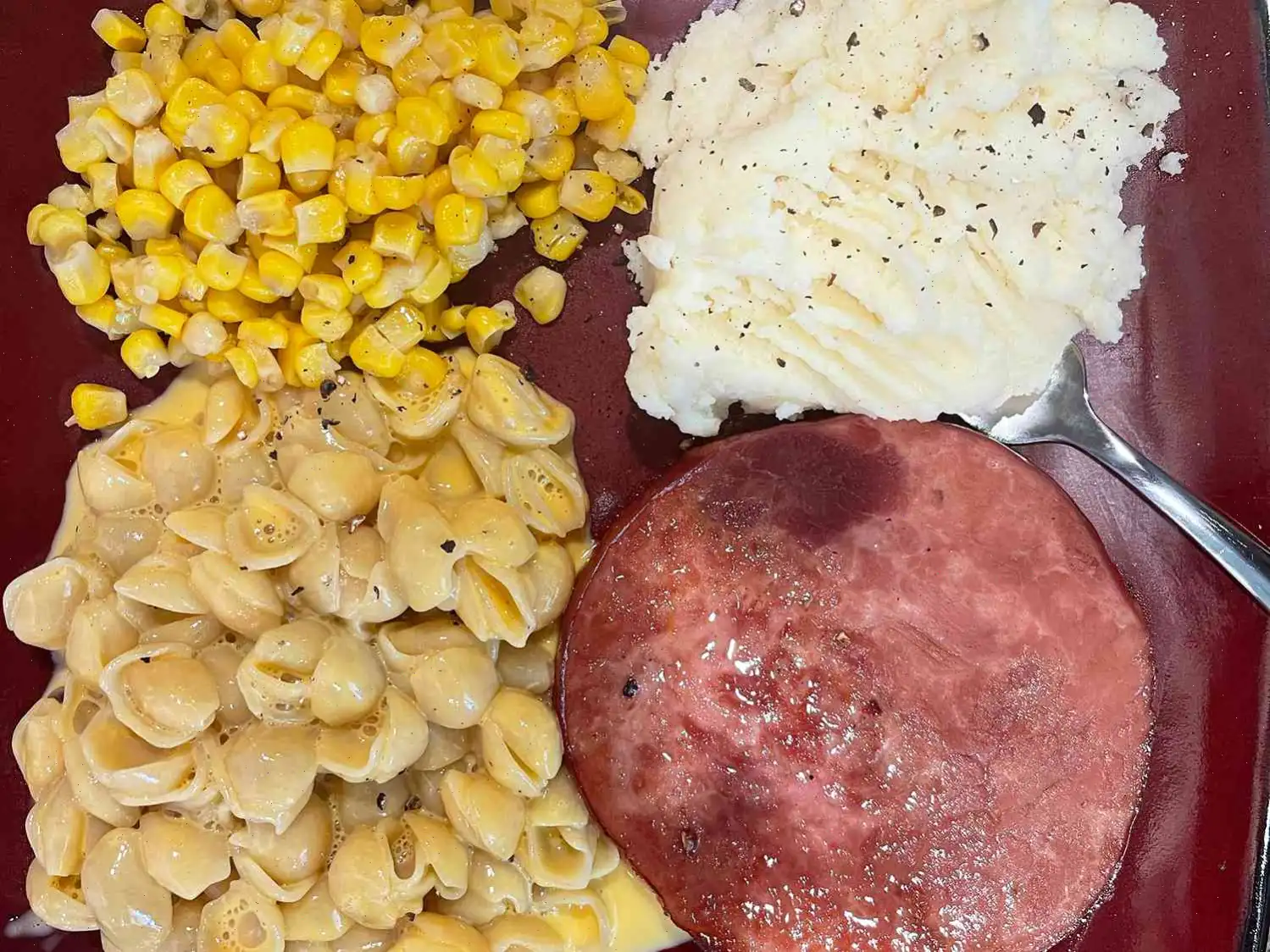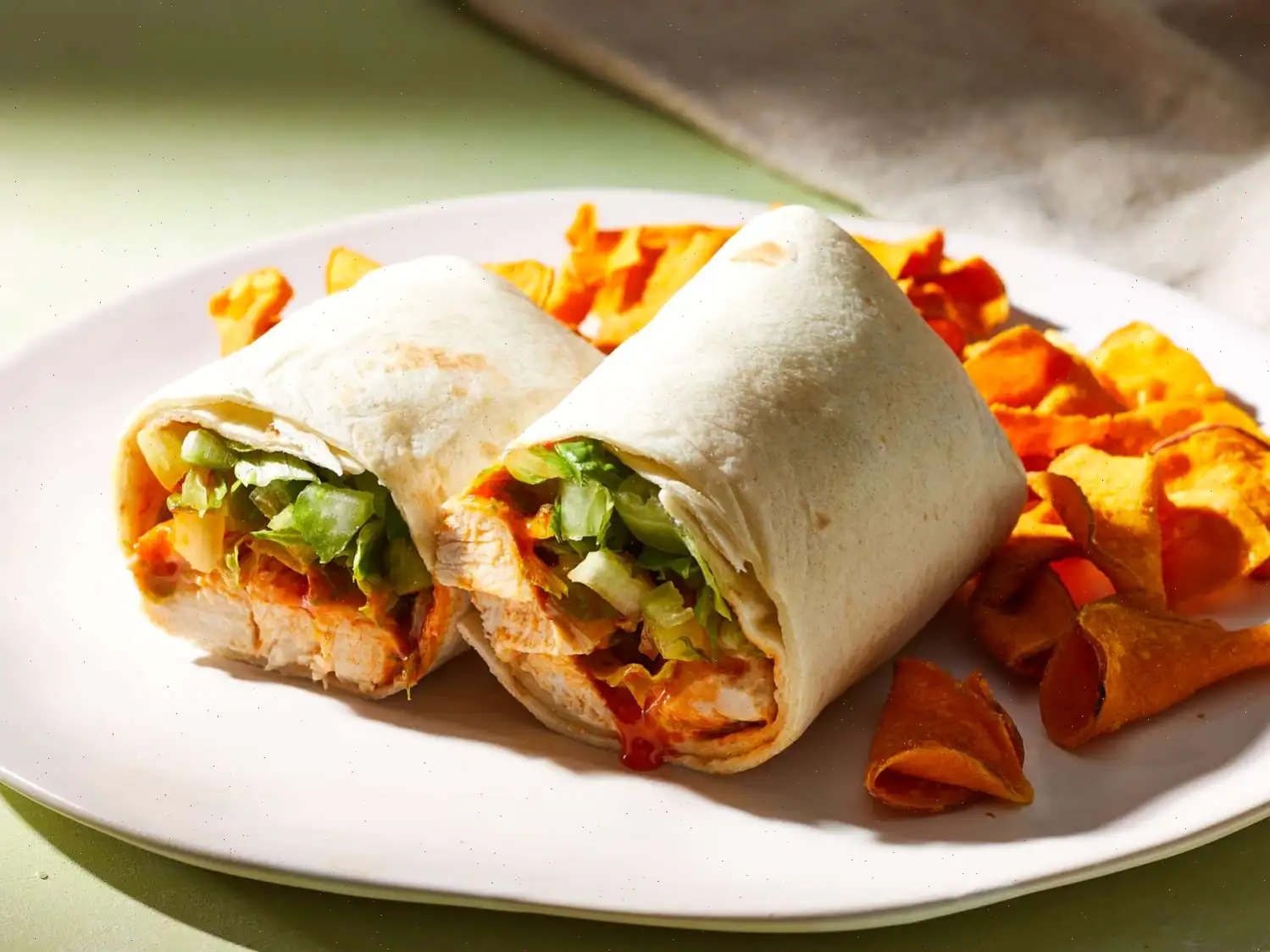
Manicotti Recipe
Manicotti with Cheese
Original Recipe (1X) yields 4 servings
Ingredients
- 5 ounces manicotti pasta
- 1 pint part-skim ricotta cheese
- 8 ounces shredded mozzarella cheese
- cup grated Parmesan cheese, divided
- 2 large eggs
- 1 teaspoon dried parsley
- Salt and ground black pepper to taste
- 1 (16 ounce) jar spaghetti sauce
Directions
Step 1: Gather all the ingredients.
Step 2: Preheat the oven to 350F (175C).
Step 3: Cook the manicotti pasta in boiling water for 10 to 12 minutes, or until al dente. Drain and rinse with cold water to stop the cooking process.
Step 4: In a large bowl, combine ricotta, mozzarella, cup of Parmesan cheese, eggs, parsley, salt, and pepper. Mix until smooth and well combined.
Step 5: Pour cup of spaghetti sauce into a 11x17-inch baking dish, spreading it evenly across the bottom.
Step 6: Stuff each manicotti shell with 3 tablespoons of the cheese mixture and arrange the filled shells over the sauce in the baking dish.
Step 7: Pour the remaining spaghetti sauce over the stuffed shells and sprinkle the top with the remaining Parmesan cheese.
Step 8: Place the baking dish in the preheated oven and bake for about 45 minutes, or until the dish is bubbly and the top is lightly browned.
Step 9: Serve and enjoy!
Nutrition Facts (per serving)
- Calories: 676
- Total Fat: 31g (40% Daily Value)
- Saturated Fat: 17g (86% Daily Value)
- Cholesterol: 189mg (63% Daily Value)
- Sodium: 1255mg (55% Daily Value)
- Total Carbohydrate: 53g (19% Daily Value)
- Dietary Fiber: 4g (15% Daily Value)
- Total Sugars: 13g
- Protein: 46g (92% Daily Value)
- Vitamin C: 2mg (3% Daily Value)
- Calcium: 1044mg (80% Daily Value)
- Iron: 3mg (19% Daily Value)
- Potassium: 708mg (15% Daily Value)
* Percent Daily Values are based on a 2,000 calorie diet. Your daily values may be higher or lower depending on your calorie needs.


History of Manicotti
Manicotti, which means little sleeves in Italian, is a traditional pasta dish originating from Italy. While it is a beloved part of Italian-American cuisine, it is not as commonly found in Italy itself, where stuffed pasta is often prepared using other types of pasta such as cannelloni. The concept of stuffing pasta tubes with a rich mixture of cheeses, spinach, or meats became widely popular in the United States, especially among Italian immigrants who adapted their traditional recipes to the new ingredients available in America. Manicotti became a symbol of the hearty and flavorful Italian-American cuisine.
Regional Variations
In Italy, pasta is a cornerstone of every meal, but regional variations can differ significantly. In southern Italy, for example, manicotti is often made with ricotta cheese, while northern regions may incorporate bchamel sauce. Italian-Americans have made their own adaptations, frequently adding ground meats such as beef or sausage to the filling and covering it with marinara sauce. In the United States, particularly around Christmas or Easter, manicotti is often served as a festive dish, with families preparing large batches for gatherings. Some regions even add a layer of mozzarella on top before baking, enhancing the richness of the dish.
What Sets Manicotti Apart?
Manicotti is often compared to dishes like cannelloni or stuffed shells, but it stands apart due to its larger tube shape, which makes it easier to stuff. Unlike cannelloni, which is typically made with a smooth, rigid tube, manicotti tubes are slightly more open and often ridged, giving them a distinctive texture that soaks up more sauce during baking. This dish also differs from stuffed shells, which are typically smaller and may not be as packed with cheese and other fillings as manicotti. The size and versatility of manicotti tubes make them perfect for creating a filling, satisfying meal with layers of flavor.
Where Is Manicotti Typically Served?
Manicotti is commonly served as a main dish in family-style meals, particularly in Italian-American households. It is often featured at holiday dinners, special gatherings, and celebrations. In Italy, its typically served during festive times like Christmas or Easter, though in its more authentic forms, stuffed pasta dishes vary from region to region. In restaurants, manicotti is a favorite comfort food, often found on the menu of Italian bistros or family-owned eateries, especially in cities with a large Italian-American population. It pairs wonderfully with garlic bread and a side salad for a complete meal.
Fun Facts About Manicotti
- The first known reference to manicotti dates back to the early 1900s in Italian-American cookbooks.
- In Italy, pasta tubes like manicotti are often used to make a variety of baked pasta dishes that are a hit in colder months due to their hearty fillings and warming nature.
- Some variations of manicotti include seafood fillings, such as shrimp or crab, which are a nod to coastal regions in Italy.
- Manicotti is versatile, with many modern versions incorporating spinach, mushrooms, and other vegetables, making it a suitable choice for vegetarians.
- The dish is often topped with a variety of cheeses, such as mozzarella, Parmesan, and ricotta, each contributing to the gooey, savory goodness that defines manicotti.
FAQ about Manicotti Recipe
Comments
Ronald Wright
09/24/2022 12:45:36 AM
I highly recommend skipping the step of pre-cooking the pasta. Fill the shells with your desired filling, spread a generous amount of sauce on the bottom of the baking pan, arrange the stuffed shells on top, pour more sauce over them until fully covered, sprinkle with Parmesan and mozzarella, then cover with foil and bake for an hour.
Sarah Garcia
01/01/2023 12:17:17 PM
I tried the recipe for the first time, and my family absolutely loved it.
Pamela Parker
05/30/2023 02:44:29 AM
I made this delicious dish exactly as directed and it turned out great. I hadn't had Manicotti in a long time, and now I can't wait to make it again soon. The only issue I encountered was when I tried to use a plastic bag to fill in the filling. Thank you for sharing this recipe. - Rich and Jeanne C.
Dennis Nguyen
03/02/2023 07:42:47 PM
This recipe is amazing! I decided to enhance it by adding a touch of lemon zest and oregano. The cheese was perfectly creamy and delicious, definitely a winner in my book! This recipe is one for the recipe box for sure. 😊




